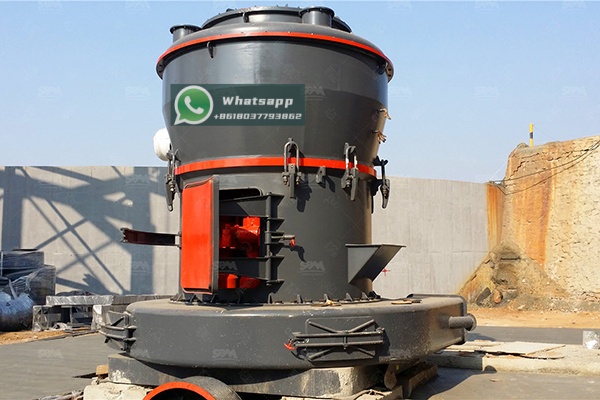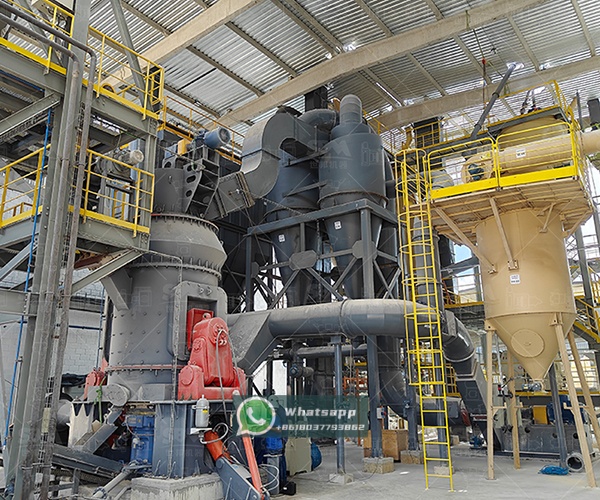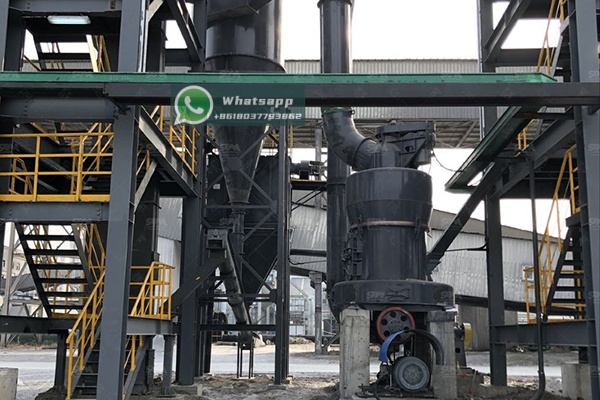The gypsum board manufacturing industry relies heavily on the consistent production of high-quality gypsum powder. The physical properties of the final board product—including its strength, fire resistance, and smooth surface finish—are directly influenced by the particle size distribution and fineness of the raw gypsum powder (calcium sulfate dihydrate) and the calcined gypsum (calcium sulfate hemihydrate, or stucco). Efficient and precise grinding is, therefore, not merely a preparatory step but a core process that dictates product quality, production efficiency, and overall operational cost. This article explores the grinding challenges specific to this industry and presents advanced technological solutions to overcome them.
Gypsum rock extracted from quarries undergoes a series of processing steps before it becomes the core material for wallboard. After primary crushing, the material must be finely ground to a specific fineness to ensure optimal performance in the calciner (kettle or flash calciner). The calcination process, where gypsum (CaSO₄·2H₂O) is heated to remove water and become stucco (CaSO₄·½H₂O), is highly sensitive to particle size. Uniformly fine particles calcine more evenly and completely, leading to a superior final product with consistent set times and strength.

Post-calcination, the stucco may require further milling or classification to achieve the exact fineness needed for the board line’s slurry mixture. The goal is to produce a powder that, when mixed with water and additives, creates a stable slurry with excellent fluidity that sets with a strong, interlocking crystal structure.
Manufacturers face several distinct challenges when grinding gypsum:
To address these challenges, the industry has moved beyond traditional ball mills and rudimentary hammer mills to more sophisticated grinding systems. The ideal solution offers a combination of drying, grinding, classifying, and conveying in a single, integrated unit. This is where vertical roller mills and advanced trapezium mills have become the technology of choice.
Vertical Roller Mills are exceptionally well-suited for the gypsum industry. They utilize a bed-compression grinding principle, where rollers hydraulically press against a rotating grinding table. The material is ground and simultaneously dried by hot gases introduced into the mill. The integrated classifier immediately separates fine particles, which are carried away by the gas stream, while coarse particles fall back to the table for further grinding.
Key Advantages for Gypsum:
For gypsum board manufacturers seeking a reliable, efficient, and versatile grinding solution, Shanghai Zenith Machinery’s LM Vertical Grinding Mill stands out as an exemplary choice. This mill is engineered to excel in the precise grinding of non-metallic minerals like gypsum, integrating five functions—crushing, grinding, powder selection, drying, and material conveying—into a single, robust machine.
The LM series is particularly effective for grinding calcined gypsum (stucco) to the exact fineness required for board core slurry. Its ability to handle varying moisture levels and its precise classification system ensure a consistent, high-quality product that directly enhances the board manufacturing process.
| Model | Plate diameter (mm) | Capacity (t/h) | Output fineness (μm) | Max feed size (mm) | Main motor (kW) |
|---|---|---|---|---|---|
| LM130K | 1300 | 10-28 | 170-40 | <38 | 200 |
| LM190K | 1900 | 23-68 | 170-40 | <45 | 500 |
| LM280K | 2800 | 50-170 | 170-45 | <50 | 1250 |

For manufacturers producing high-performance or specialty boards that may require additives or extremely fine gypsum powders, ultra-fine grinding solutions are necessary. Zenith’s XZM Ultrafine Grinding Mill is designed for this purpose. It can produce powders ranging from 325 to 2500 mesh (5-45 microns), ideal for creating smooth surface layers or enhancing the binding properties of the slurry.
| Model | Working diameter (mm) | Max feed size (mm) | Final size (mesh) | Output (kg/h) | Main motor power (kW) |
|---|---|---|---|---|---|
| XZM221 | Φ800 | ≤20 | 325-2500 | 500-4500 | 75 |
| XZM268 | Φ1680 | ≤20 | 325-2500 | 5000-25000 | 315 |
The choice of grinding equipment is a strategic decision for any gypsum board manufacturer. In an increasingly competitive market, the ability to produce consistent, high-quality board core material at the lowest possible operational cost is a definitive advantage. Advanced grinding systems from Shanghai Zenith Machinery, such as the LM Vertical Grinding Mill and the XZM Ultrafine Grinding Mill, provide the technological edge needed to achieve this.
By investing in energy-efficient, reliable, and precise grinding technology, manufacturers can not only improve their product quality but also enhance their sustainability profile and boost their bottom line. Partnering with an experienced manufacturer like Zenith ensures access to cutting-edge technology, comprehensive technical support, and grinding solutions tailored to the specific demands of the gypsum board industry.
